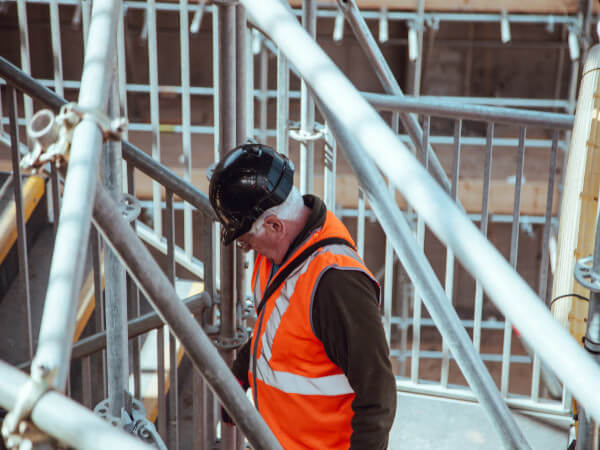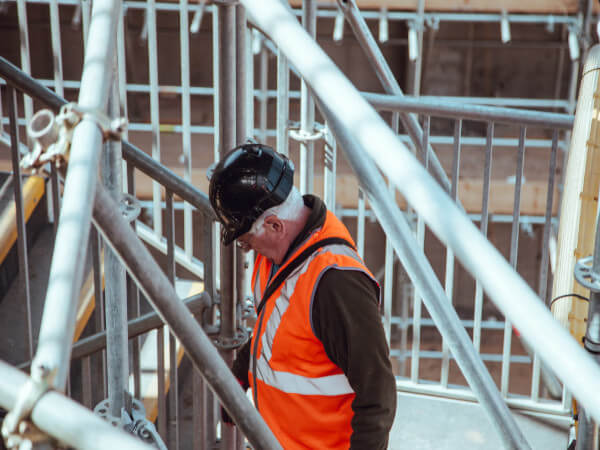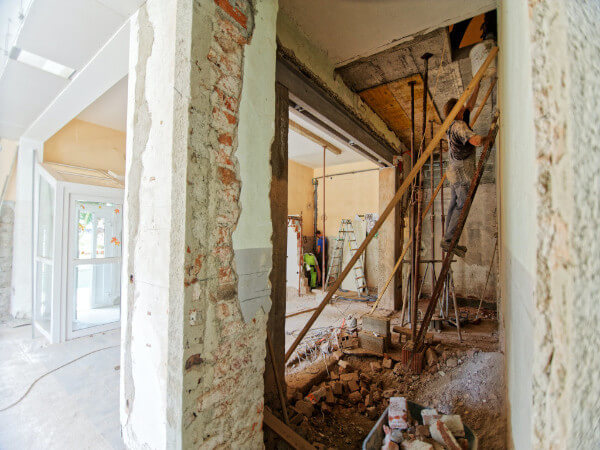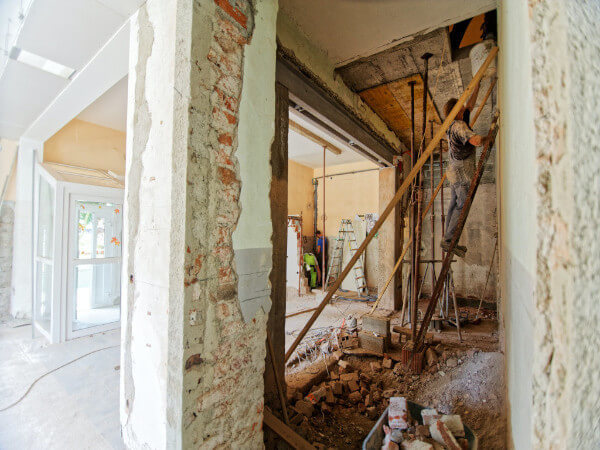House Painters Wilmington do much more than just put on a coat of paint. They also repair drywall, caulk, and seal knots in wood. They use specific tools to prepare the surface for painting and mix their paints.
Painters began to organize in guilds as early as the fourteenth century. This helped establish the profession as a respected career and set strict standards for practice.

When hiring a professional house painter, there are many factors to consider. For example, labor, materials, and paint costs can vary widely. Also, the size and location of the home can affect costs. It’s important to get several estimates from different painters and discuss the job before making a decision. Doing so can help minimize miscommunication and save money. It is also important to ask the painter what types of preparation are included in the estimate and whether they charge a travel fee.
Online searches are among the best ways to find a house painter. Most search engines allow you to find local contractors quickly, and some even provide a list of customer reviews and testimonials. In addition to determining the price of the painting services, you should also ask the painter about their experience, training, and licenses.
House painters apply paints, wall coverings, and ceiling textures in new construction and remodeled spaces. They also prepare surfaces and repair damage. They may work indoors or outdoors. They use power and hand tools, spray equipment, brushes, rollers, and tarps. They must be comfortable working with cleaning solvents and airborne odors from the spraying equipment. They also must be able to wear face and eye protection.
Some house painters specialize in specific styles and finishes, such as faux painting or murals. These painters are typically more expensive than general house painters. However, they are often worth the extra expense because of their expertise in the field.
The cost of painting a house depends on the size and condition of the surface, and it varies from region to region. The cost can range from $2 to $6 per square foot. A house painter usually includes all related materials and labor in a quote. Sometimes, the painter may offer a discount or a free estimate.
In addition to the cost of painting, other expenses should be considered, such as prep work and cleanup. Sometimes, a painter may charge additional fees for removing wallpaper, priming, and sanding, as well as caulking and repairing damaged areas. They should also provide a written estimate that includes these costs.
Painting your house is a challenging task and requires much knowledge. A professional painter can save you time and money while ensuring the job is done correctly. In addition to the basic painting tasks, a house painter can perform many other responsibilities, such as removing outlet covers and switch plates, applying putty, and patching cracks. When choosing a house painter, find one with experience and ask for references.
Although a high school diploma is not required, most painters have a background in construction or carpentry and have at least some formal training. Some take apprenticeships sponsored by contractors and trade unions. These programs teach apprentices blueprint reading and the use of tools. A career as a house painter can lead to other jobs in the construction industry, such as becoming a contractor or remodeler.
Besides the obvious aesthetic benefits, a coat of paint protects your home from moisture and weather damage. It also helps regulate indoor temperature by reflecting sunlight and reducing heat absorption. In addition, it can help reduce your energy bills in the long run. A house painter can help you select the right color to match your home’s style and improve its curb appeal.
A good house painter will work fast to finish the project promptly. They will also be able to advise you on the best types of paints and coatings for your home. For example, a kitchen or bathroom may require special paint that resists moisture and mold.
The first step in finding a good house painter is to search the internet for local contractors. You can enter your town’s name and “painters” into a search engine. You will then get a list of painters in your area. Many painters are small businesses and operate as solo entrepreneurs or with a small group of people. Others are part of larger companies that employ a team of people.
Before hiring a house painter, ensure they are licensed and insured. This is important because it will protect you if something goes wrong during the painting process. Also, check whether the painter uses quality products or just cheap, store-bought paint.
It would be best to look for a few things in a house painter before hiring one. First, make sure they have a license to work in your state. Also, ask for proof of insurance. This includes workers’ compensation and liability coverage. This will protect you if the painter falls off a ladder or gets hurt while working on your home. Finally, get a contract before beginning any work. This should include all key details of the job, including the painting contractor’s name, address, phone number, and license number. It should also list the exact cost of the project and a detailed description of the materials and labor involved.
Most house painters don’t have any formal education, but many learn as a painter’s helper or through apprenticeship programs sponsored by contractor organizations and trade unions. Some technical schools offer blueprint reading and shop classes that can give aspiring painters the skills they need for this profession.
In some states, a license is required for painters who take on projects valued at more than $500 or who are considered to be contractors. for example, a painting contractor must register with the Department of Consumer Protection, pass a business and law exam, and show that they have insurance before being permitted to operate. A painting contractor must be licensed by the Division of Consumer Affairs and display their registration number prominently on all advertising and business documents.
Another licensing requirement is for house painters who work on homes or buildings built before 1978 and may come into contact with lead-based paints. In these cases, the Environmental Protection Agency requires painters and painting contractors to take lead safety courses and obtain a special certificate to work on these structures.
Whether or not you need a license to be a house painter depends on your state, city, and even the neighborhood where you live. Some areas don’t require a permit for painters, but most do, especially if the house painting contractor is a full-time, professionally run business.
Painter needs insurance coverage to protect themselves from unforeseen accidents on the job. It is also a requirement in many states. Typically, this includes commercial general liability insurance, workers’ compensation insurance, and auto insurance. In addition, it is essential to have business interruption insurance in case your business is disrupted due to an accident. It is also a good idea to carry a business umbrella policy to increase coverage limits.
Whether your painting company is large or small, it is important to have proper insurance coverage. Not only will it protect your business in the event of an accident, but it will also help you prove that you are a legitimate business. Requesting copies of a contractor’s insurance documents before hiring them for a project is a good practice. Please make sure the documents are up to date and that they cover your scheduled work.
Painters are at a higher risk of injury than other types of contractors. This is because they are constantly using ladders and scaffolding. In addition, they are exposed to toxic fumes and dust. Injuries can be costly for a painting company and result in lost productivity. Fortunately, a reputable insurance broker can provide a comprehensive painter’s business insurance package to protect the company from these risks.
The best painting insurance companies will offer affordable policies and excellent customer service. They will also allow you to compare different policies and prices online and make an informed decision. A good option is The Hartford, which offers all the necessary policies (general liability, BOP, inland marine, and workers’ comp) in one package. You can even buy a policy online and receive a COI immediately.
Another option is Thimble, which lets you purchase a painting insurance policy in 10 minutes. This platform combines the most popular policies to give you the protection you need. It also helps you save money by allowing you to pay by the hour, day, or month. The site also has a helpful FAQ page that answers common questions.



 Choosing the right roofing material for your home is an important decision. It can affect your project’s cost and your roof’s durability over time. It is also essential to consider the climate of your area and the type of weather it usually gets. Certain materials are better suited to different types of weather, such as snow or acidic rain.
Choosing the right roofing material for your home is an important decision. It can affect your project’s cost and your roof’s durability over time. It is also essential to consider the climate of your area and the type of weather it usually gets. Certain materials are better suited to different types of weather, such as snow or acidic rain.


















